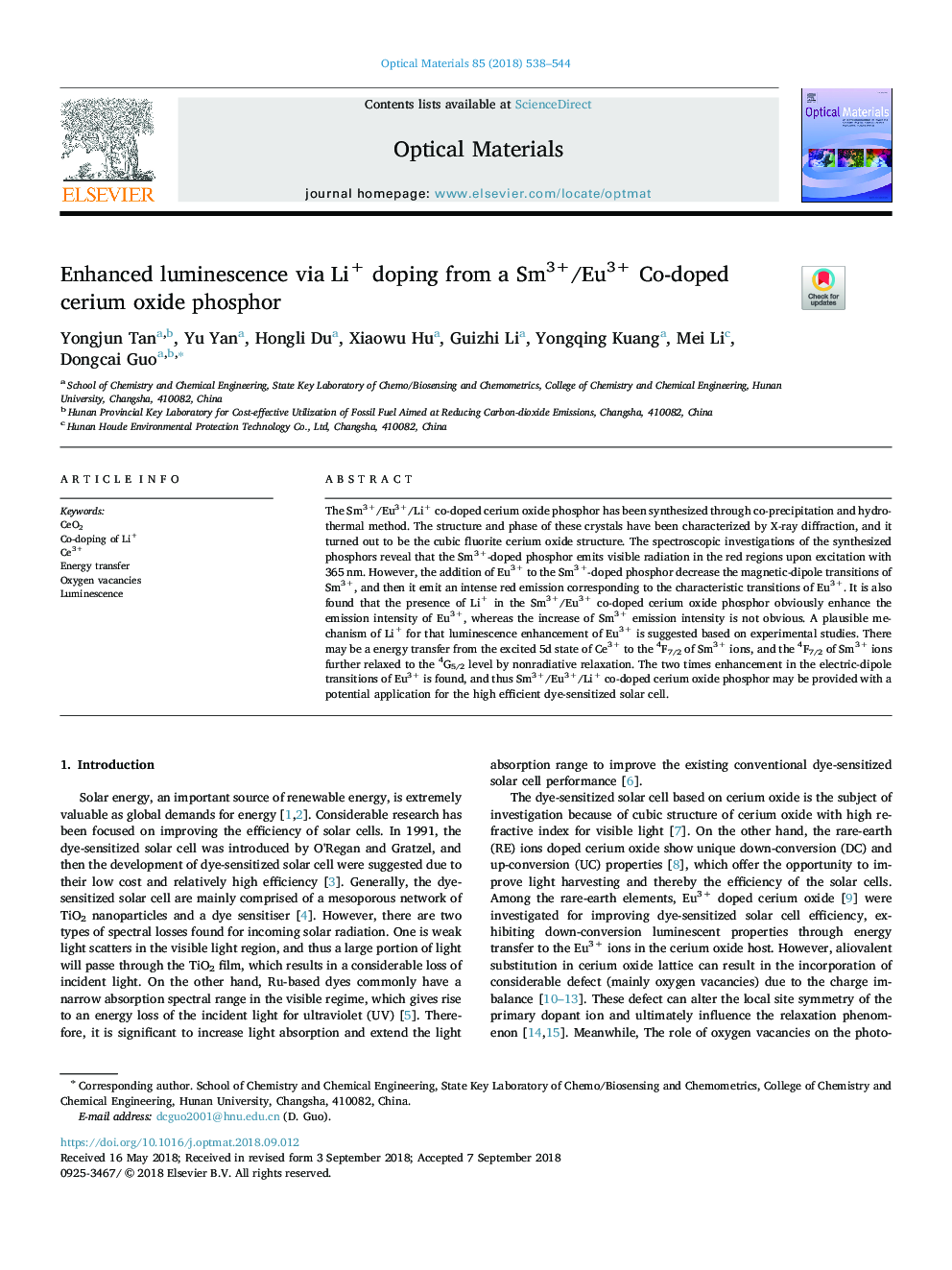| Article ID | Journal | Published Year | Pages | File Type |
|---|---|---|---|---|
| 11032807 | Optical Materials | 2018 | 7 Pages |
Abstract
The Sm3+/Eu3+/Li+ co-doped cerium oxide phosphor has been synthesized through co-precipitation and hydro-thermal method. The structure and phase of these crystals have been characterized by X-ray diffraction, and it turned out to be the cubic fluorite cerium oxide structure. The spectroscopic investigations of the synthesized phosphors reveal that the Sm3+-doped phosphor emits visible radiation in the red regions upon excitation with 365â¯nm. However, the addition of Eu3+ to the Sm3+-doped phosphor decrease the magnetic-dipole transitions of Sm3+, and then it emit an intense red emission corresponding to the characteristic transitions of Eu3+. It is also found that the presence of Li+ in the Sm3+/Eu3+ co-doped cerium oxide phosphor obviously enhance the emission intensity of Eu3+, whereas the increase of Sm3+ emission intensity is not obvious. A plausible mechanism of Li+ for that luminescence enhancement of Eu3+ is suggested based on experimental studies. There may be a energy transfer from the excited 5d state of Ce3+ to the 4F7/2 of Sm3+ ions, and the 4F7/2 of Sm3+ ions further relaxed to the 4G5/2 level by nonradiative relaxation. The two times enhancement in the electric-dipole transitions of Eu3+ is found, and thus Sm3+/Eu3+/Li+ co-doped cerium oxide phosphor may be provided with a potential application for the high efficient dye-sensitized solar cell.
Related Topics
Physical Sciences and Engineering
Materials Science
Ceramics and Composites
Authors
Yongjun Tan, Yu Yan, Hongli Du, Xiaowu Hu, Guizhi Li, Yongqing Kuang, Mei Li, Dongcai Guo,
